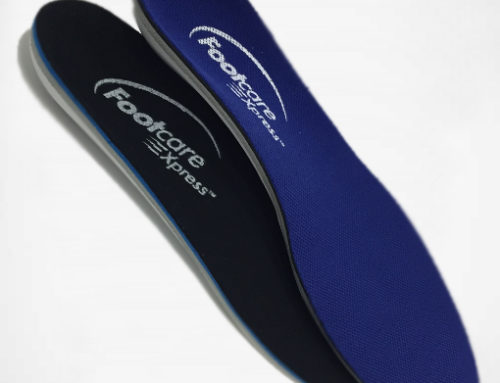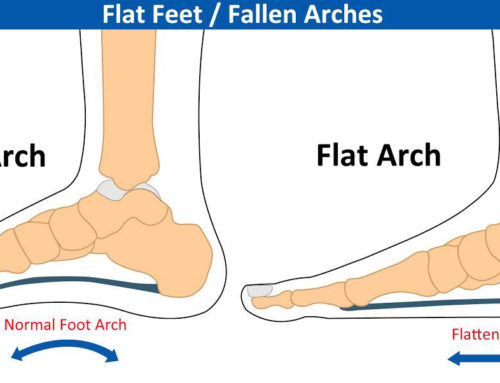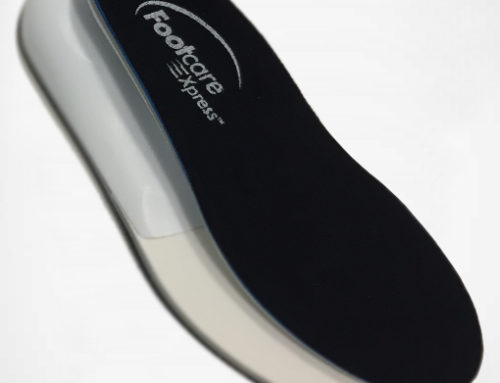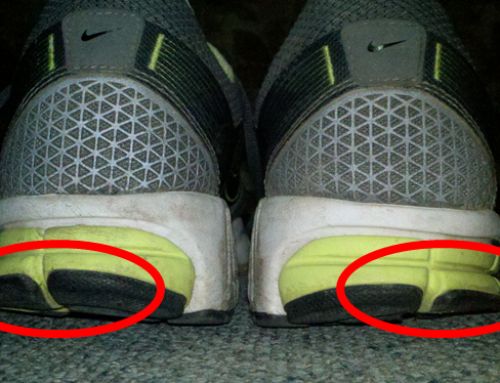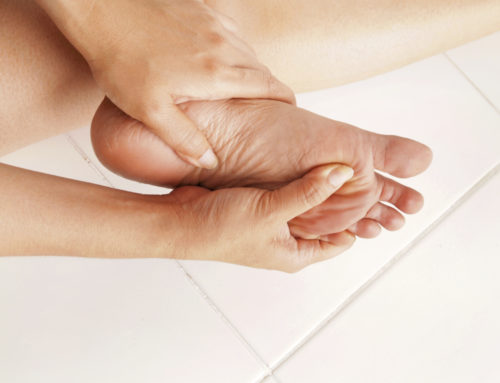Neuroma pain is typically described as a burning, tingling pain of the forefoot and toes. It can also be felt as an aching or shooting pain in the forefoot. Patients with this problem commonly state that it feels like they are walking on a pebble under their forefoot. The patients usually state that removing their shoes and massaging the forefoot relieve the discomfort. The pain that is present is usually present following a long period of standing, walking, or running.
A neuroma is formed by an enlargement of the sheath surrounding a nerve that runs between the metatarsal bones in the forefoot (just behind the toes). The most common location that this occurs is between the third and fourth metatarsals. Neuromas may also occur between the other metatarsal bones also. The reason that the neuroma is located in this area is that the nerve running between the bones divides here and has two branches one going to each of the toes in front of the metatarsals. It is a chronic inflammatory process that causes the enlargement of the nerve sheath.
A common cause of a neuroma is wearing shoe gear that is too tight. Another common cause of neuromas can be pronation (turning out of the heels) of the foot. The pronation causes a rotation of the metatarsal bones, which can cause pinching of he nerve between the adjacent bones. It is this chronic pinching by either tight shoes or rotation of the bones that causes the enlargement of the nerve sheath. And as the nerve sheath continues to enlarge the pain continues to get worse for the patient.
Prior to seeing a podiatrist a patient may try some of the following to relieve their pain. A patient should first evaluate their shoes. If the shoes are tight, then the patient should replace those shoes with a wider shoe that does not squeeze the foot. A patient may also check the laces on the shoes to make sure they are not tied to tight. A patient may also try to get more supportive shoes that may stop some of the pronation that may be present and adding to the problem. A patient may also choose to try some over the counter pain medication.
Upon seeing a podiatrist the patient should expect a thorough medical and biomechanical evaluation. After the evaluation the podiatrist can treat the neuroma several different ways. Conservative treatments consist of placing pads under the forefoot to take the pressure off of the areas as well as to try and spread the metatarsal bones. These pads can be placed in shoes by themselves or incorporated into a custom orthoitc. The custom orthotic is also designed to control the pronation that may be present. A podiatrist may also want to inject the neuroma. A steroid injection is sometimes utilized to try and stop the inflammatory process that is occurring and causing the pain. Another option is that the podiatrist may try sclerosing the nerve with an alcohol injection. The goal of the sclerosing is to shrink the enlarged nerve sheath. It may a series of several injections prior to seeing any improvement. Finally if all the above treatments have not relieved the patient’s pain the podiatrist may choose to surgically remove the neuroma.
Neuromas are a problem that effect many patients. It is a problem that usually responds to conservative treatment, but in some situations surgical removal is necessary.


